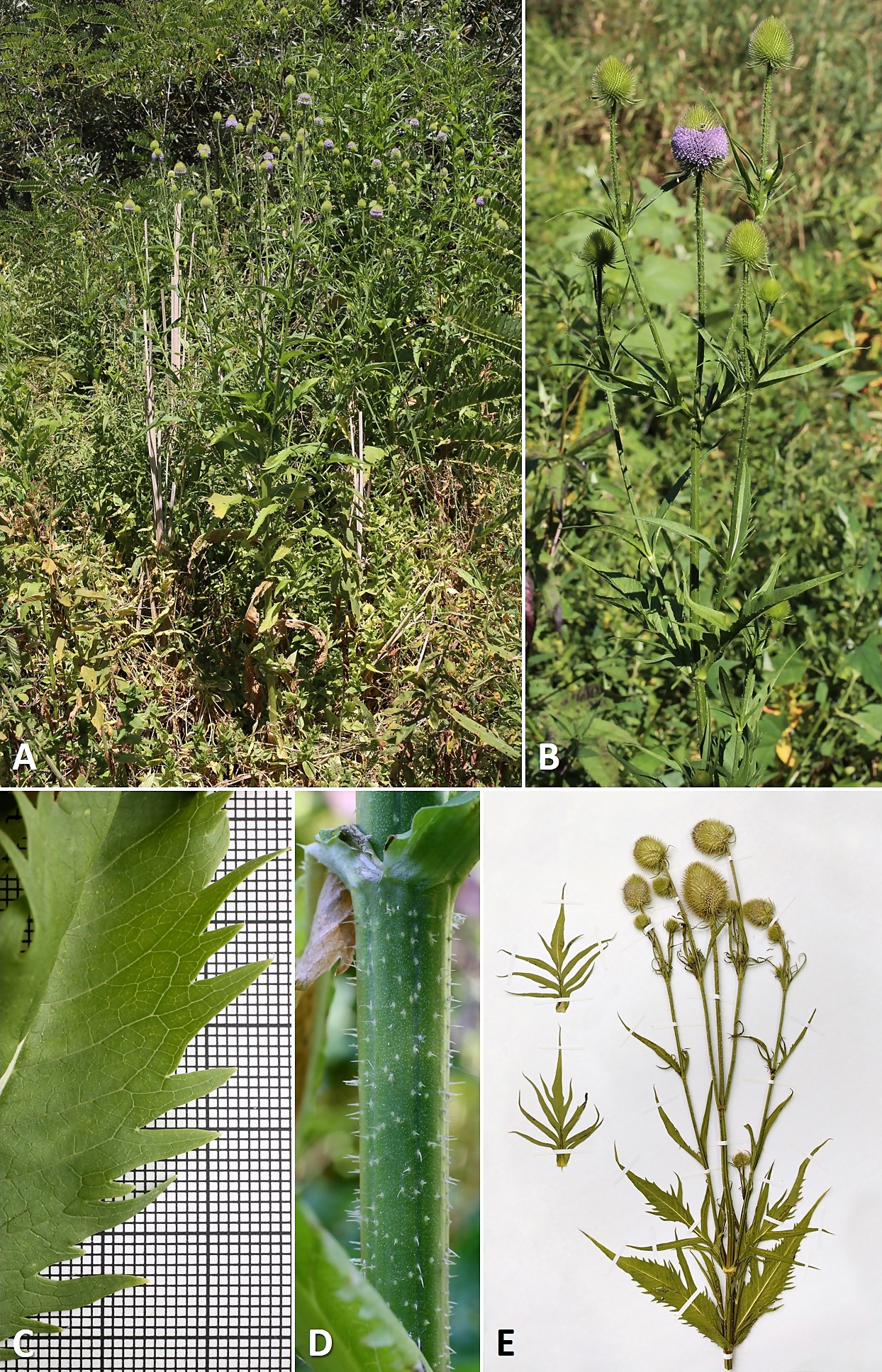Dipsacus gmelinii (Caprifoliaceae), a wetland species new to the Bulgarian flora
DOI:
https://doi.org/10.2478/hacq-2023-0007Keywords:
new record, wetland flora, Belene, Natura 2000, Danube River, disjunct occurrenceAbstract
Dipsacus gmelinii is here reported as a new addition to the vascular flora of Bulgaria. It was recorded on Belene Island, in the Danube River. In the present paper, the species is described morphologically with an emphasis on carpomorphological characters. The distinctive differences from related species of the genus are also highlighted. Additionally, ecological conditions and floristic composition at the localities of the species, and phytosociological relationships of the communities in which it participates are discussed.
Downloads
References
Andrei, M. (1968). Dipsacus gmelini M.B., specie nouă pentru flora României. Studii si cercetari de Biologie, Seria Botanica, 20(2), 107–111.
Bobrov, E. G. (1972). Dipsacus L. In B. K. Shishkin & E. G. Bobrov (Eds.), Flora of the U.S.S.R. 24 (pp. 16–20). Israel Program for Scientific Translations. Available at: https://www.biodiversitylibrary.org/item/95305#page/40/mode/1up
Cheshmedziev, S.,Todorov, E., Koev, V., Mihov, S., & Kutzarov Y. (2022). Artificial nesting platforms support population recovery of the Dalmatian pelican Pelecanus crispus along the Danube River in Bulgaria. Conservation Evidence Journal 19, 15–20. https://conservationevidencejournal.com/reference/pdf/11640
Daddario, J. F. F., Bentivegna, D. J., Tucat, G., & Fernandez, O. A. (2017). Environmental factors affecting seed germination of common teasel (Dipsacus fullonum). Planta Daninha 35. https://doi.org/10.1590/S0100-83582017350100065
Deil, U. (2005). A review on habitats, plant traits and vegetation of ephemeral wetlands – a global perspective. Phytocoenologia 35, 533–706.
Dihoru, G., & Negrean, G. (2009). Cartea roşie a plantelor vasculare din România. Editura Academiei Române.
Doroftei, M., Oprea, A., Ștefan, N., & Sârbu, I. (2011). Vascular wild flora of Danube delta biosphere reserve. Scientific Annuals of the Danube Delta Institute, 17, 15–52.
Golub, V. B., Bondareva, V. V., Sorokin, A. N., & Nikolaychuk, L. F. (2015). Reed (Phragmites australis agg.) dominated plant communities in the Lower Volga Valley. Vegetation of Russia 26, 26–37. https://www.binran.ru/files/journals/VegRus/2015_26/VEG_RUS_GOLUB_et_al_2015_26.pdf
Hansen, A. (1976). Dipsacus L. In T. G. Tutin, V. H. Heywood, N. A. Burges, D. M. Moore, D. H. Valentine, S. M. Walters & D. A. Webb (Eds.), Flora Europaea. Plantaginaceae to Compositae (and Rubiaceae) 4 (pp. 58–59). Cambridge University Press.
Kotov, M. I. (1961). Dipsacus L. In M. I. Kotov (Ed.), Flora of the URSR 10 (pp. 346–355). Akademiya Nauk URSR.
Marschall von Bieberstein, F. A. (1808). 232. Dipsacus gmelinii. In Flora Taurico-Caucasica: exhibens stirpes phaenogamas, in Chersoneso Taurica et regionibus Caucasicis sponte crescentes 1 (p. 92). Typis Academicis.
MoEW (2016). Management Plan for Persina Nature Park. Retrieved January 28, 2023, from https://www.moew.government.bg/static/media/ups/tiny/filebase/Nature/Protected_areas/Planove_za_upravlenie/PU_PP_Persina.pdf
Petrova, A. (2013). Dipsacus L. In D. Peev, S. I. Kožuharov & M. E. Ančev (Eds.), Flora Reipublucae Bulgaricae 11 (pp. 35–38). Editio Academica “Professor Marin Drinov”.
POWO (2023). Plants of the World Online. Dipsacus gmelinii M. Bieb. Facilitated by the Royal Botanic Gardens, Kew. Retrieved January 28, 2023, from https://powo.science.kew.org/taxon/urn:lsid:ipni.org:names:319264-1.
Salisbury, E. J. (1970). The pioneer vegetation of exposed muds and its biological features. Philosophical Transactions of the Royal Society of London. Series B, Biological Science 259, 207–255. https://doi.org/10.1098/rstb.1970.0059
Seregin, A. P. (Ed.) (2023). Moscow Digital Herbarium: Electronic resource. Moscow State University, Moscow. Retrieved January 28, 2023, from https://plant.depo.msu.ru/
Thiers, B. (2023). Index Herbariorum: A global directory of public herbaria and associated staff. Retrieved January 28, 2023, from http://sweetgum.nybg.org/ih/
Tzonev, R. (2009). Plant communities, habitats and ecological changes in the vegetation on the territory of three protected areas along the Danube River. In D. Ivanova (Ed.), Proceedings of IV Fourth Balkan Botanical Congress (pp. 321–331). Prof. Marin Drinov Academic Publishing House.
Tzonev, R. (2015). Allium angulosum L. In D. Peev, A.S. Petrova, M. Anchev, D. Temniskova, C. Denchev, A. Ganeva, Ch. Gussev & V. Vladimirov (Eds.), Red Data Book of the Republic of Bulgaria 1 (p. 179). BAS & MoEW.

Downloads
Published
How to Cite
Issue
Section
License
Copyright (c) 2024 ZRC-SAZU

This work is licensed under a Creative Commons Attribution-NonCommercial-NoDerivatives 4.0 International License.
Authors guarantee that the work is their own original creation and does not infringe any statutory or common-law copyright or any proprietary right of any third party. In case of claims by third parties, authors commit their self to defend the interests of the publisher, and shall cover any potential costs.
More in: Submission chapter












